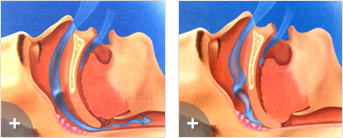

Sleep Apnea
What is Sleep Apnea?
Sleep apnea (AP-ne-ah) is a serious, often undiagnosed sleep disorder where your body struggles to breathe and stops breathing for a few seconds to minutes, while you sleep. It is an ongoing deterioration of your body which affects your heart and brain. This results in poor sleep quality that makes you tired during the day.
undiagnosed sleep disorder where your body struggles to breathe and stops breathing for a few seconds to minutes, while you sleep. It is an ongoing deterioration of your body which affects your heart and brain. This results in poor sleep quality that makes you tired during the day.
Sleep apnea is one of the leading causes of excessive daytime sleepiness. Breathing pauses can last from a few seconds to minutes. They often occur 5 to 30 times or more an hour. Typically, normal breathing then starts again, sometimes with a loud snort or choking sound.
See Video
CPAP Treatment Solution
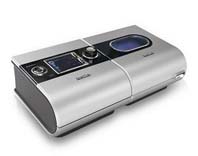
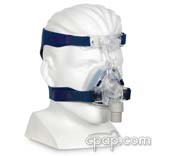
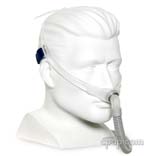
Alternative Treatment Solution

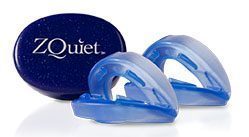
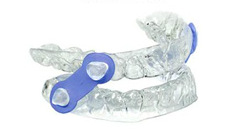
If you have obstructive sleep apnea (OSA),
Not enough air can flow into your lungs through the mouth and nose during sleep, even though breathing efforts continue.  When this happens, the amount of oxygen in your blood decreases.
When this happens, the amount of oxygen in your blood decreases.  Your brain responds by awakening you enough to tighten the upper airway muscles and open your windpipe.
Your brain responds by awakening you enough to tighten the upper airway muscles and open your windpipe.  Normal breaths then start again, often with a loud snort or choking sound.
Normal breaths then start again, often with a loud snort or choking sound.
Although people who have sleep apnea typically snore loudly and frequently, not everyone who snores has sleep apnea.
Types of sleep apnea
 Obstructive sleep apnea is the most common type of sleep apnea. It occurs when the soft tissue in the back of your throat relaxes during sleep, causing a blockage of the airway (as well as loud snoring). OSA occurs in 95% of all cases with sleep apnea.
Obstructive sleep apnea is the most common type of sleep apnea. It occurs when the soft tissue in the back of your throat relaxes during sleep, causing a blockage of the airway (as well as loud snoring). OSA occurs in 95% of all cases with sleep apnea.
 Central sleep apnea is a much less common type of sleep apnea that involves the central nervous system, rather than an airway obstruction. It occurs when the brain fails to signal the muscles that control breathing. People with central sleep apnea seldom snore.
Central sleep apnea is a much less common type of sleep apnea that involves the central nervous system, rather than an airway obstruction. It occurs when the brain fails to signal the muscles that control breathing. People with central sleep apnea seldom snore.
 Mixed sleep apnea is a combination of obstructive sleep apnea and central sleep apnea.
Mixed sleep apnea is a combination of obstructive sleep apnea and central sleep apnea.
Causes:
A number of factors can make a person susceptible to sleep apnea. These factors include: Throat muscles and tongue that relax more than normal while asleep
Throat muscles and tongue that relax more than normal while asleep Enlarged tonsils and adenoids
Enlarged tonsils and adenoids  Being overweight—the excess fat tissue around your neck makes it harder to keep the throat area open
Being overweight—the excess fat tissue around your neck makes it harder to keep the throat area open  Head and neck shape that creates a somewhat smaller airway size in the mouth and throat area
Head and neck shape that creates a somewhat smaller airway size in the mouth and throat area  Congestion, due to allergies, that can also narrow the airway
Congestion, due to allergies, that can also narrow the airway  Family history of sleep apnea
Family history of sleep apnea  Regular alcohol intake and smoking
Regular alcohol intake and smoking  Increasing age. The risk of sleep apnea become significant after the age of 40.
Increasing age. The risk of sleep apnea become significant after the age of 40.
Risks

 Heart disease, heart attack
Heart disease, heart attack  Stroke
Stroke  Sudden death
Sudden death  Hypertension
Hypertension  Depression
Depression  Diabetes
Diabetes  Impotence
Impotence  Memory loss
Memory loss
Symptoms:
Major signs and symptoms of sleep apnea
 Loud and chronic snoring
Loud and chronic snoring  Choking, snorting, or gasping during sleep
Choking, snorting, or gasping during sleep  Long pauses in breathing
Long pauses in breathing  Daytime sleepiness, no matter how much time you spend in bed
Daytime sleepiness, no matter how much time you spend in bed
Other common signs and symptoms of sleep apnea:
 Waking up with a dry mouth or sore throat
Waking up with a dry mouth or sore throat  Morning headaches
Morning headaches  Restless or fitful sleep
Restless or fitful sleep  Insomnia or nighttime awakenings
Insomnia or nighttime awakenings  Going to the bathroom frequently during the night
Going to the bathroom frequently during the night  Waking up feeling out of breath
Waking up feeling out of breath  Forgetfulness and difficulty concentrating
Forgetfulness and difficulty concentrating  Moodiness, irritability, or depression
Moodiness, irritability, or depression
Remember, not everyone who has these symptoms will necessarily have sleep apnea. We possibly all suffer from these symptoms from time to time but people with sleep apnea demonstrate some or all of these symptoms most of the time.
![]()
Diagnosis:
A sleep study is the most accurate test for diagnosing sleep apnea. It records what happens with your breathing while you sleep. You can have your sleep study at a time when it is convenient for you, and in the comfort of your own home. Read more.
Treatment:
Oral Appliances 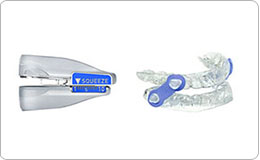
Worn while sleeping, an oral appliance holds the lower jaw (the mandible) forward to keep the tongue from falling back and obstructing the airway. The fancy term for these kinds of oral appliances is mandibular advancement devices.
Read more.
CPAP
CPAP (Continuous Positive Airway Pressure) is considered the gold standard for OSA treatment. CPAP is comprised of a mask that delivers air to the nose or mouth during sleep. It is highly effective for most people, but some patients have a difficult time tolerating the therapy. CPAP intolerance may be attributed to comfort issues, mask leak, claustrophobia or embarrassment. Read more.
Surgery
Many surgeries are used for OSA. These include a wedge-shaped tongue reduction, tonsillectomy, or uvula removal.
wedge-shaped tongue reduction, tonsillectomy, or uvula removal.  Uvulopalatopharyngoplasty (UPPP) by trimming soft palate.
Uvulopalatopharyngoplasty (UPPP) by trimming soft palate.  Laser-Assisted Uvuloplasty (LAUP) involves scarring cuts to tighten soft palate and trimming uvula.
Laser-Assisted Uvuloplasty (LAUP) involves scarring cuts to tighten soft palate and trimming uvula.  Nasal surgeries (septoplasty) to straighten a deviated septum.
Nasal surgeries (septoplasty) to straighten a deviated septum.
 Life Style Changes
Life Style Changes
While a diagnosis of sleep apnea can be scary, it is a treatable condition. In fact, there are many things you can do on your own to help, particularly for mild to moderate sleep apnea. Home remedies and lifestyle modifications can go a long way in reducing sleep apnea symptoms.
Lifestyle changes that can help sleep apnea
 Lose weight. Some people find that even moderate to severe sleep apnea can be completely corrected by losing excess weight.
Lose weight. Some people find that even moderate to severe sleep apnea can be completely corrected by losing excess weight.  Quit smoking. Smoking contributes to sleep apnea by increasing inflammation and fluid retention in the throat and upper airway.
Quit smoking. Smoking contributes to sleep apnea by increasing inflammation and fluid retention in the throat and upper airway.  Avoid alcohol, sleeping pills, and sedatives, especially before bedtime, because they relax the muscles in the throat and interfere with breathing.
Avoid alcohol, sleeping pills, and sedatives, especially before bedtime, because they relax the muscles in the throat and interfere with breathing.  Avoid caffeine and heavy meals within two hours of going to bed. Maintain regular sleep hours. Apnea episodes decrease when you get plenty of sleep.
Avoid caffeine and heavy meals within two hours of going to bed. Maintain regular sleep hours. Apnea episodes decrease when you get plenty of sleep.
![]()
Visit our resources page for further information about sleep apnea or download our brochure

